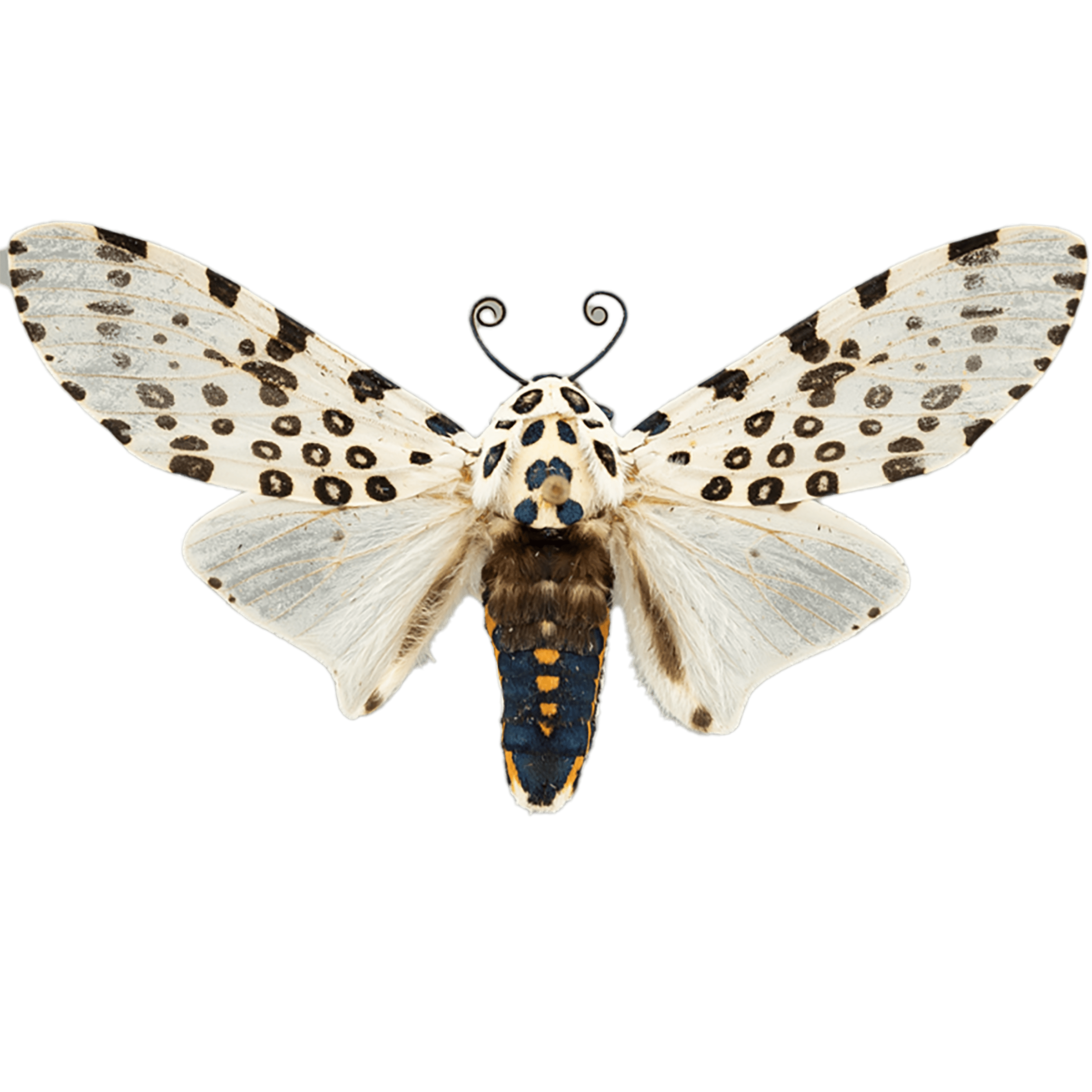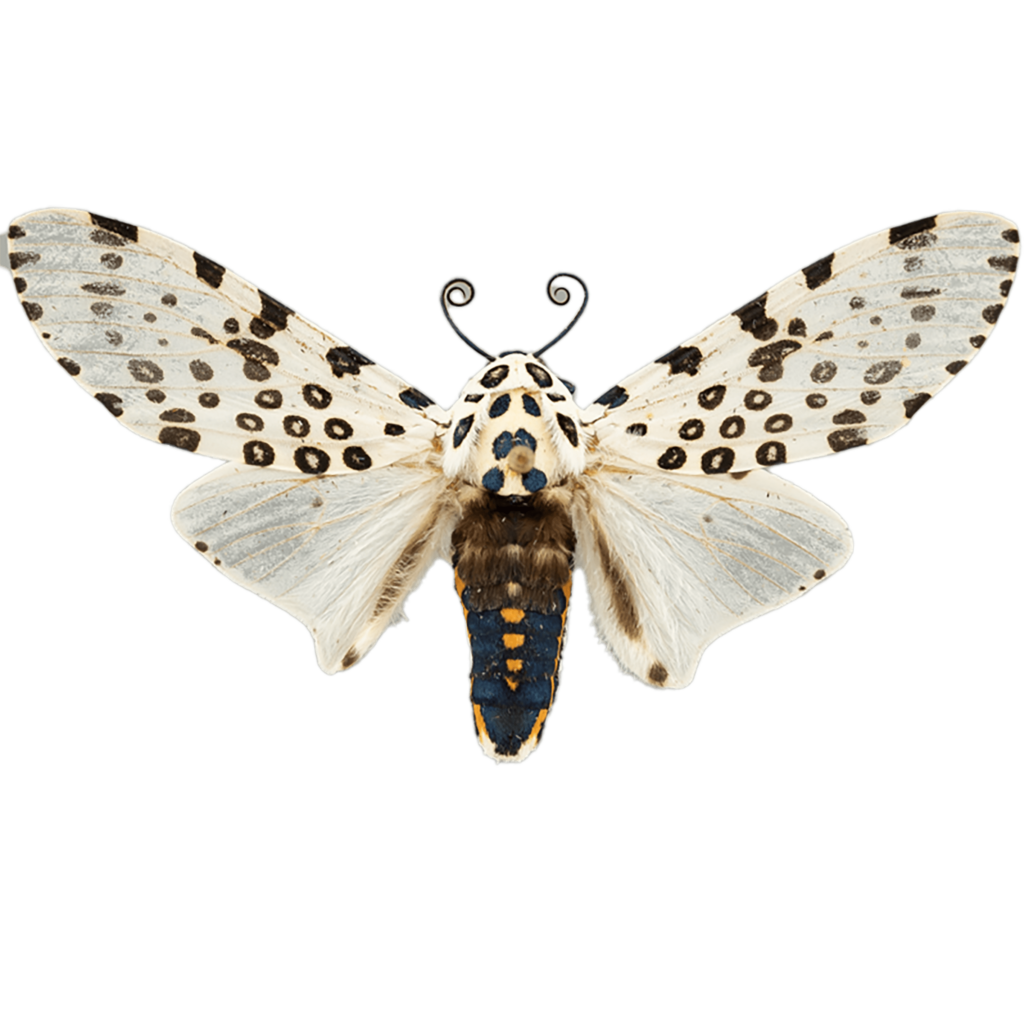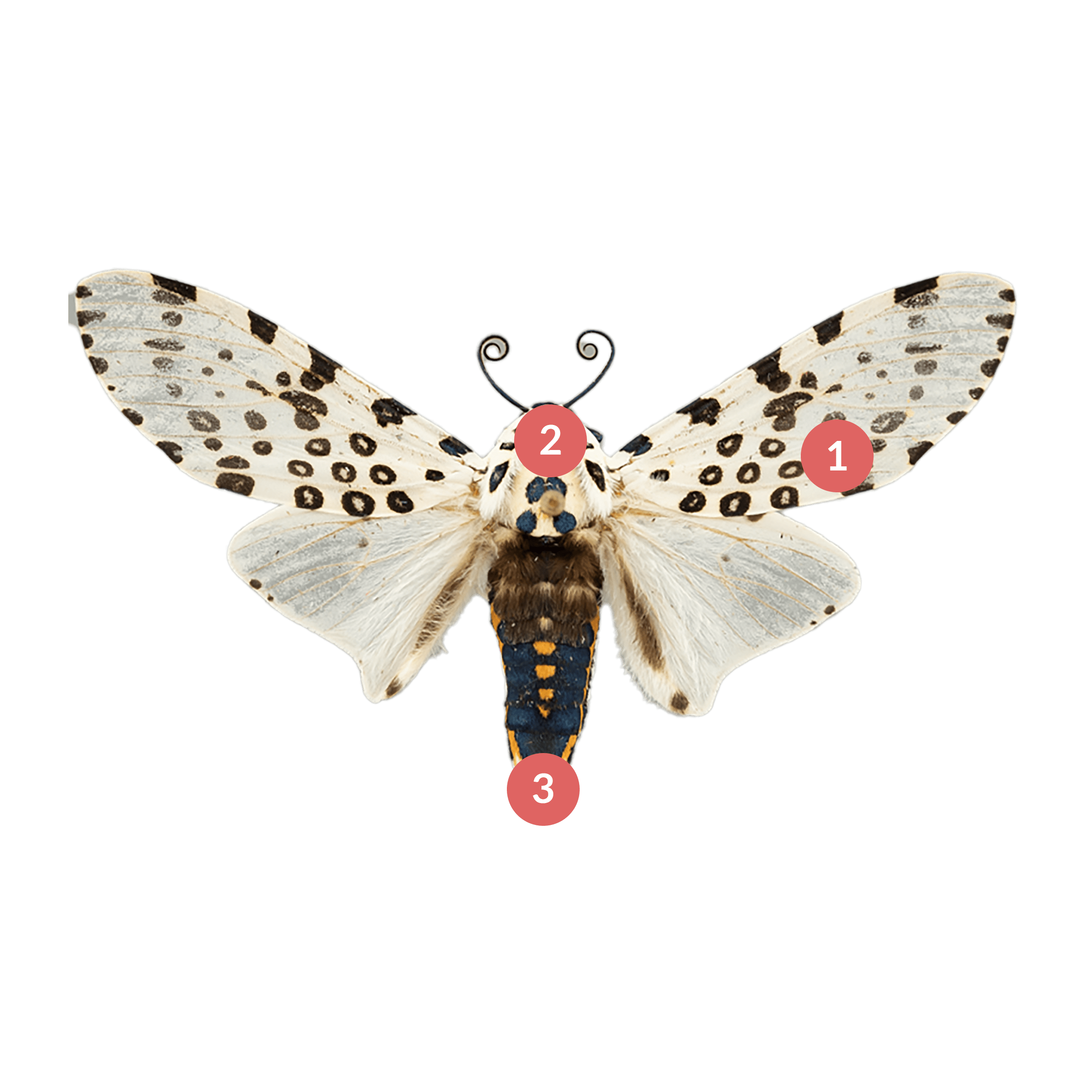About
Hypercompe scribonia, commonly known as the Giant Leopard Moth, is a striking species of moth found throughout the eastern United States. The wings of the Giant Leopard Moth are predominantly white with black spots, and the abdomen is covered in orange and blue markings. The wingspan of this moth can range from 5 to 9 cm.
One interesting characteristic of the Giant Leopard Moth is its fuzzy appearance, which is due to the black and white fur covering its body. This fur is thought to serve as a form of protection, as it may deter predators from attacking the moth. In addition to its fur, the moth has blue accents on the tips of its legs and antennae, as well as on the inside of a few of the black rings on its wings.
Another interesting behavior of the Giant Leopard Moth is that it sometimes emits yellowish droplets of liquid when threatened or handled. This is a chemical defense mechanism that may deter predators from attacking the moth.
Despite its intimidating appearance, the Giant Leopard Moth is not harmful to humans. In fact, the bright coloration of its wings serves as a warning to predators that the moth is toxic and unpalatable. Additionally, when threatened, the Giant Leopard Moth will curl up into a ball and play dead, further deterring predators.
Overall, the Giant Leopard Moth is a fascinating and unique species that is easily recognizable in the eastern United States. Its distinctive appearance, interesting behavior, and chemical defense mechanism make it a valuable addition to any field guide for North American moths.
Forests, open areas with trees, open woodlands


